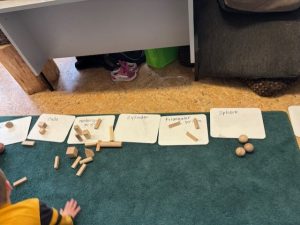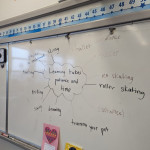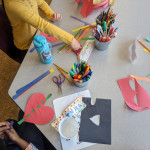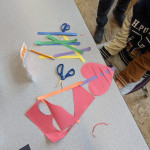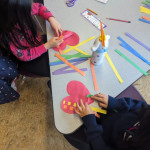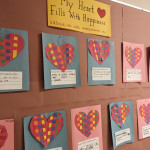Fantastic February!
Dear families,
So excited for ice skating tomorrow! Please come to school on time. We aim to leave as soon as the bell goes.
To bring:
- Booster seat – CLICK HERE for ICBC child car seat requirements.
- Gloves or mittens to protect their hands (mandatory)
- Wear long socks (Highly recommend! Sometimes the top of the skates dig in to their legs but the longer socks protect them.)
- Ski or snowboard helmet but the rink will have them to borrow.
- Waterproof pants are recommended but this is not necessary so you do not need to go out to buy.
- Dress in layers. While it is cold at the rink, once they start moving around, they get quite warm.
For parent volunteer drivers. We have just enough so if you can’t make it, please let me know as soon as possible. Thank you!
- We have such appreciation for your help to drive us to the rink. We will be leaving right after attendance is taken. When we arrive at Bill Copeland, the rink and skate shop is on the lower floor. There are a set of stairs from the outside that will lead you there.
- BEFORE: Please help children line up to get their skate rentals. The helmets will be in a bin off to the side. For better selection, get the helmets BEFORE they put on skates. Please help children tie skates.
- DURING: Some students may want a break and come off the ice. Please encourage them to take a short break and then ask them to go back onto the ice to maximize their skating time.
- DURING: If you will be on the ice, please support help us support our beginning skaters as much as possible. This is a very large group so everyone’s support during this time will be greatly appreciated.
- AFTER: Help remove skates and wipe down the blade. There should be a towel close to where they return the skates. If you return to school before I do, please bring them to class so they can eat their snacks. Thank you!
Deep Kindness
We talked about the difference between kindness and deep kindness. Showing kindness can be things like holding the door for others and helping others like getting ice or a bandage for a friend. Some of these actions may feel easy to do. When we feel empathy, it can move us to show compassion. We dove a little further into the difference between these two words too. Compassion is empathy with action.
To demonstrate kindness and compassion, we watched a short video about a girl who needed help. In the first scene, the other person chose not to help because she was too into her iPad game. They re-do the scene with the girl deciding that even though she was focused on her game, she paused it to go help. Showing deeper kindness can be doing things when you don’t feel like it.
This was followed up by reading a story called Each Kindness by Jacqueline Woodson. It’s about a young girl who is new at the school. She tries to make friends with the others but they ignore her and make fun of her. She learns that there are opportunities to show kindness. If you don’t take those opportunities, sometimes you don’t have a chance later.
Parents, I enjoyed reading Deep Kindness by Houston Kraft. He talks about a gap between our beliefs about kindness and the need for intentional actions to show deep kindness. If you like, watch the author as he shares about and encourages us to practice deep kindness in this YouTube video (7:36). Every day, I see many of your children demonstrate this level of deep kindness towards their classmates and it is truly heartwarming.
We are mathematicians.
We continued to solidify our understanding of 2-D and 3-D shapes. Students have learned the difference and can use the vocabulary of faces, edges, and vertices to describe shape attributes. We had fun showing what we know in the form of an active game I made up: Geometry Dash!
First I asked each table group to sort the shapes for part one. Then for part two, they had to retrieve the shape based on the description. For example:
- Which shape has 6 faces and 8 edges?
- Which shape has only 2 faces?
- Which shape has 5 vertices?
They had to use their critical thinking brains to figure out which shape to bring back to the basket.
Your child should be able to identify the 3-D shapes too: sphere, cube, cylinder, cone, rectangular prism, pyramid, triangular prism.
Art with Ms. Kapusta
This week, students learned a new skill in art: weaving! We first began the day by reading a story by the Cree/Lakota author Monique Gray Smith and Cree/Métis illustrator Julie Flett called “My Heart Fills With Happiness.” We then we each shared what filled out hearts during our community circle. Because weaving has long been practiced by Indigenous people, we then had a discussion about Coast Salish groups in BC (including the lands of the Squamish, Musqueam, and Tsleil-Waututh on which we live, learn, and play), the importance of the cedar tree, and how cedar bark is stripped and used by Coast Salish people to make different kinds of weavings, including baskets and mats.
Before we began weaving, I reminded students of the First Peoples Principle of Learning: “Learning takes patience and time.” We had a brainstorm about what this meant and other things that we have learned that took patience and time. Every student shared a connection, and I knew they were ready to start weaving! Students were then led step-by-step in learning how to weave using paper strips on a paper loom. Every student finished their heart weaving–I was so proud! Weaving is a fantastic activity to practice fine motor skills and a growth-mindset.>
The salmon eggs hatched so they are now alevin. We couldn’t see them because they are hiding but this is to keep them safe in this stage.
“Learning is holistic, reflexive, reflective, experiential, and relational (focused on connectedness, on reciprocal relationships, etc.)” – First Peoples Principles of Learning
It’s hard to believe we have three weeks before spring break. Time flies when we are having fun! We continue to work hard at all aspects of our holistic learning. Honestly, last week, one of the things that brought me great joy was watching some of them interact with people they don’t usually talk to during Heart Time. I told them how heartwarming it was to witness their effort and joy in building new friendships. (Notice. Name. Nurture.) Then before recess, one child said, “I’m so excited to be playing with two new classmates at recess because I’ve never played with them before!”
The connections we make in school are such an important piece to it being a happier place to be. When students contribute in showing deeper kindness and demonstrate all the qualities of what it means to be Kitchener HAWKS, (helpful, accepting, welcoming, kind, safe), they are happier, feel more connected, and learn better together. Strong relationships built on love, kindness, and compassion are the foundation to how well our class functions as a community because we are interconnected. This is why we intentionally start our day with Heart Time, Community Connection Circle time, and celebrate our small wins together.
I feel so blessed to spend every day with your beautiful children and to work alongside you. Thank you for sharing them with us and for your continued support at home! As always, please let us know how we can support your child better. ❤️
